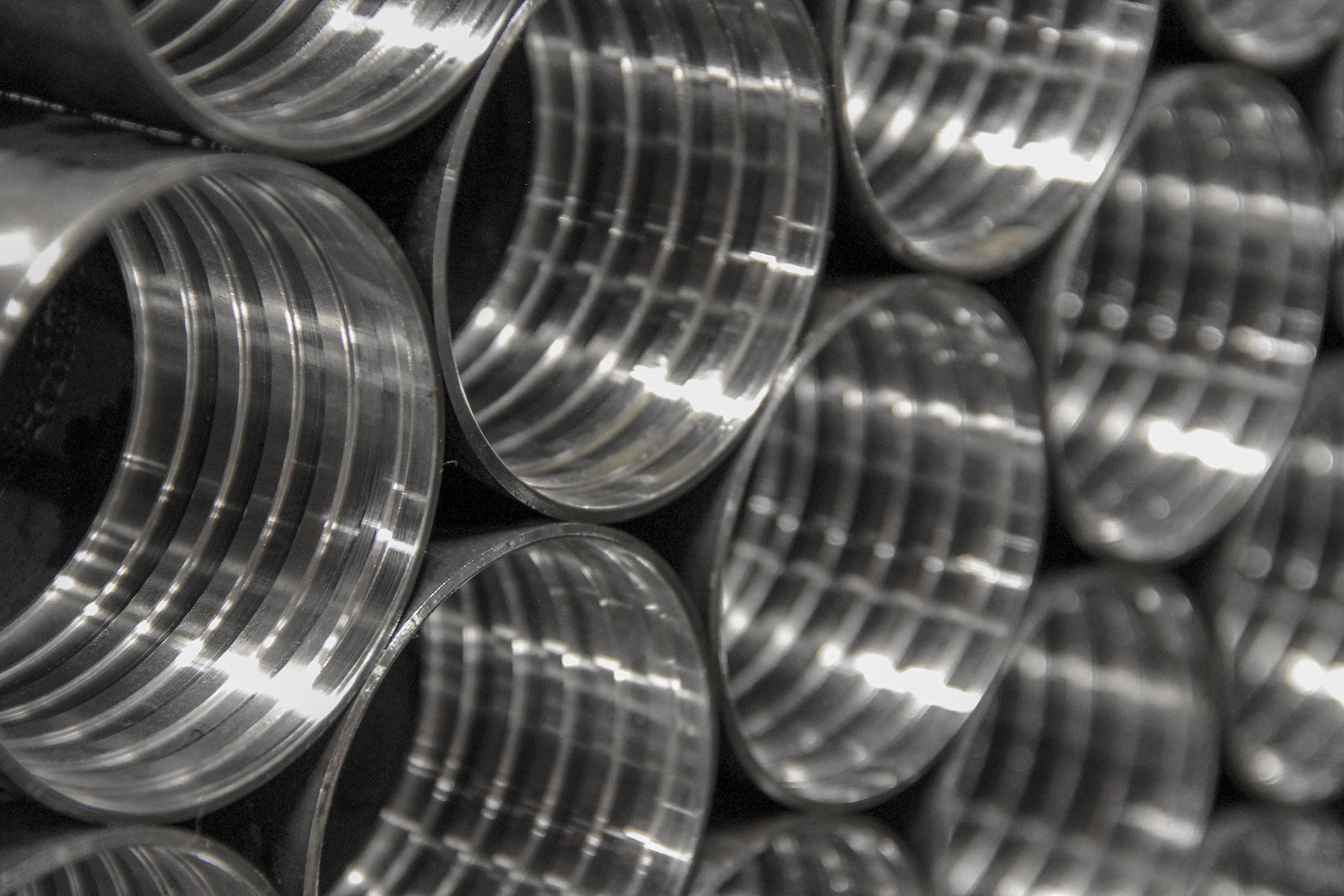EXPLORATION
2 avril 2020
Forage directionnel avec des barils de filaire
Le forage dirigé est un défi de l'industrie depuis de nombreuses années, surmonté par le développement de nombreuses solutions d'outillage et pratiques de forage différentes. Des simples barils de filaire reconfigurés et des paramètres de forage modifiés aux outils orientables et à la motorisation de fond de trou, le succès est défini en atteignant la cible souhaitée, en utilisant un écart suffisamment progressif pour éviter une `` charge excessive de la tige ''.
La résistance du train de tiges à la déviation - autrement appelée «rigidité» - peut être déterminée par ses propriétés matérielles et mécaniques. Étant donné que tous les composants tubulaires filaires sont fabriqués à partir de tubes en acier étirés à froid, ils ont tous les mêmes propriétés fondamentales. Plus précisément, indépendamment de la chimie, du traitement thermique ou de la dureté, toutes les nuances d'acier répondent avec la même quantité de flexion à une charge donnée (le rapport de la contrainte (charge) à la déformation (flexion) est appelé «module d'élasticité»). De plus, deux composants tubulaires en acier de dimensions égales auront une rigidité égale, même s'ils sont produits par des fournisseurs différents, quels que soient la nuance d'acier, le traitement thermique ou la dureté.

La réponse directionnelle ou la sensibilité du train de tiges aux changements de charges ou de vitesses de forage, ou aux changements de formation, dépend fortement de la rigidité du train de tiges. La rigidité des tiges de forage filaires fait plus que doubler lors du passage au système plus grand suivant (p. Ex. BQ à NQ, NQ à HQ, etc.). En conséquence, les systèmes plus grands forent plus droit mais ont beaucoup plus de résistance et une plus grande charge latérale lors du forage à travers les écarts de forage. Étant donné un peu de carottage imprégné typique et des paramètres de forage constants (en supposant qu'aucun changement de formation), le trou de forage aura tendance à former une hélice lente qui est déterminée principalement par la rigidité du train de tiges. Avec la friction du trou de forage, le train de forage lui-même peut devenir instable, se déformant en une forme hélicoïdale qui se resserre ou se desserre avec les changements de charges et de vitesses de forage, puis revient élastiquement droit lorsqu'il est déchargé.
le Canon à âme filaire Q ™ a été initialement conçu pour utiliser un tube extérieur avec un diamètre et une épaisseur de paroi sensiblement plus grands que le train instable de tiges de forage derrière lui. Les tubes externes standard offrent une rigidité environ 40% plus grande, et les tubes externes de type à trou plein fournissent une rigidité environ 70% supérieure! Le tube extérieur peut alors servir de palier ou de collier stabilisateur. Plus l'augmentation de la rigidité est importante, plus un contrôle directionnel est efficace pour résister aux changements de la formation, des paramètres de forage ou de la stabilité du train de tiges. Ce contrôle peut être amélioré avec des coquilles d'alésage stabilisées, des coupleurs d'adaptateur stabilisés et des couplages de verrouillage stabilisés.

Tenez compte de l'impact directionnel si le tube extérieur est remplacé par une autre tige de forage, supprimant complètement toute différence de rigidité du train de tiges et le contrôle directionnel associé. Développé à l'origine dans les années 1980 pour tenter de diriger les écarts de forage, les configurations de carottier, appelées «flexi-barils», remplacent le tube extérieur par un assemblage de longueur équivalente d'une tige de forage et d'adaptateurs. Cependant, le manque de contrôle directionnel combiné au manque de prévisibilité directionnelle, se traduit généralement par des écarts erratiques nécessitant soit des tentatives d'écart correctif soit un alésage pour réduire les écarts excessifs. Par conséquent, l'utilisation de barils flexibles n'est pas recommandée.
Lors de la planification des trous, tenez compte de l'impact potentiel de la déviation de la tige. La rigidité des tubes en acier est relativement élevée et, comme mentionné précédemment, augmente avec la taille du système et l'épaisseur de la section. En conséquence, le train de tiges répondra avec des charges latérales élevées contre la paroi du trou de forage, surtout juste avant et après une déviation. Par exemple, une tige de forage de taille NQ ™ déviée à la déviation maximale recommandée de 1,0 degrés sur sa longueur produit environ 9 kN (2 000 lb) de charge latérale, et une HQ ™ produit 18 kN (4 000 lb) à seulement 0,8 degré par longueur de tige. Selon la formation, ces charges latérales élevées peuvent produire un couple élevé, une usure importante des tiges ou même une «fissuration par contrôle thermique». De plus, ces points de contact génèrent des conditions de traînée et de «glissement-bâton», qui peuvent produire une réponse dynamique suffisante pour déformer de façon permanente le train de tiges en une forme hélicoïdale. Dans les cas extrêmes, lorsque le train de tiges effectue suffisamment de rotations approchant ou dépassant la déviation maximale, des défaillances de fatigue se produisent. L'utilisation de la déviation minimale possible pour toucher la cible et coller à la tige de taille NQ réduira les charges latérales, le couple et les risques de torsion ou de fissuration de la tige.
Publié à l'origine dans Australasian Drilling Magazine, février / mars 2020
INSCRIVEZ-VOUS AU INSITE DIGEST
Inscrivez-vous au INSITE Digest pour recevoir des articles comme celui-ci et plus encore.




